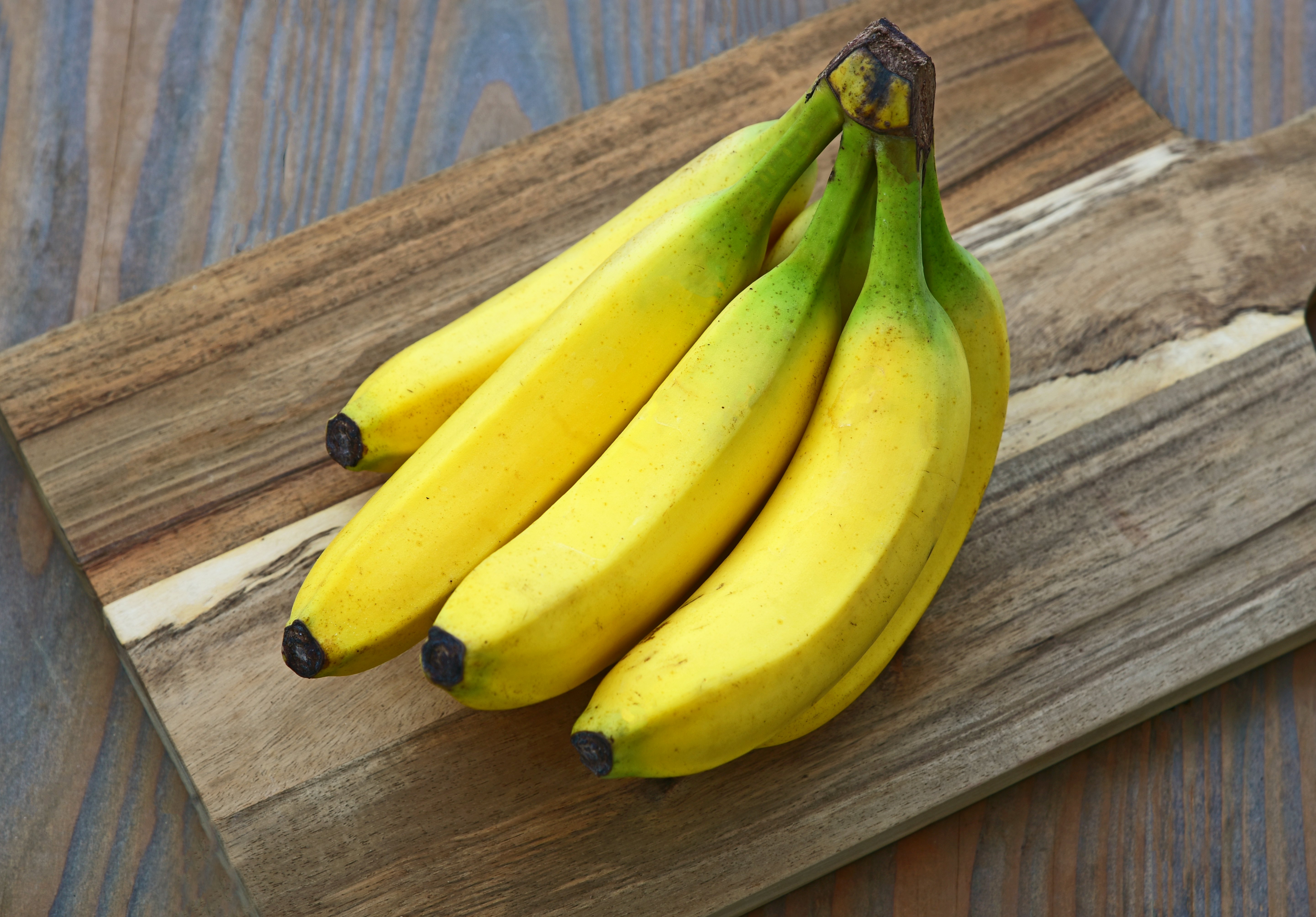
There are bananas, and then there are banana-flavored things. Laffy Taffy is my personal favorite, but Runts, Hi-Chews, and jelly beans also capture perhaps not this fruit’s essence but an idea of it.
Where did this banana-like flavor come from? The popular narrative is a tale of two bananas: the Gros Michel and the Cavendish. The Gros Michel was the dominating supermarket banana until the 1950s. That’s when the fungus Fusarium oxysporum all but wiped it out. Then the Cavendish, more resilient to the fungus, took Gros Michel’s place in the produce section. But, the story goes that the Gros Michel was the basis for artificial banana flavoring. Since most of us enjoying banana candy today are only familiar with the Cavendish, that’s why banana flavor differs from actual banana.
That entire story is, unfortunately, probably just a myth. (Not the fungus part, though, that actually happened.) The real story of artificial banana flavor comes down to one molecule, which may have predated bananas in the U.S.

Why does artificial banana flavor taste different?
That classic artificial banana flavor is a compound called isoamyl acetate. This compound — known as an ester — is the main molecule that provides a banana its flavor. However, fruits contain myriad compounds, resulting in a more complex taste. While isoamyl acetate may be the star of banana flavor, it’s not the only nuance in bananas. Banana candy, though, is all isoamyl acetate.
“Some fruits are harder to make with a single compound,” says Joel Mainland, a neuroscientist studying the science of taste and smell at the Monell Chemical Center. “There’s one fake strawberry compound, but to make a nicer strawberry, typically you need four to 12 compounds.” Synthesizing just one artificial compound is easier (and cheaper) than synthesizing literally any amount greater than one. The result is a flattened flavor that resembles the fruit.
“Some things are very easily summarized by one molecule, but the flavor is usually caused by lots of molecules,” Mainland says. Fruits contain hundreds of compounds, and between three and 40 compounds might reproduce the flavor faithfully. Other fruits are easier to simulate than others. Concord grape, for example, is “summarized” by methyl anthranilate, so grape flavors don’t taste too far off from the real thing.

Where did artificial banana flavor come from?
Isoamyl acetate naturally occurs at varying levels in most banana types, as well as other ripening fruits. It’s highest in the Gros Michel and Cavendish.
The pervading belief is that isoamyl acetate is based specifically on the Gros Michel, but there’s evidence they’re not connected.
Flavor historian Nadia Berenstein spoke to PBS in a video on artificial banana taste: “Artificial banana flavor actually came before Gros Michel — or even bananas — were common in American marketplaces, so it’s quite possible that a lot of Americans tasted a banana flavored thing, a synthetic chemical version of banana before they tasted Gros Michel.” Bananas didn’t make it to the U.S. until the 1800s when sailors in the Caribbean brought shoots over. They were first peddled for 10 cents at the Centennial Exposition in Philadelphia (the first World’s Fair in the U.S.) in 1876.
“It’s very easy to synthesize,” Mainland tells Inverse. “It was one of the earlier molecules to be synthesized.” It’s so easy that isoamyl acetate serves as a flavor base in other artificial goodies.
The recipe is isoamyl alcohol plus acetic acid, catalyzed by an acid and heated.

Do Gros Michel and Cavendish taste different?
This is ultimately up to the taster. In the PBS exploration, the host says that while Gros Michel and Cavendish taste the same, the Gros Michel does have a much sweeter aftertaste that resembles artificial banana’s flavor. However, her colleagues didn’t agree, and thought that in a blind taste test they wouldn’t be able to tell the two apart.
In case you were wondering, Gros Michel isn’t gone forever. They can be purchased online.
If they can make a fruit that tastes just like artificial banana, now that would be a game changer.
CHECK, PLEASE is an Inverse series that uses biology, chemistry, and physics to debunk the biggest food myths and assumptions.
Now read this: Are figs full of dead wasps? An entomologist reveals the answer







